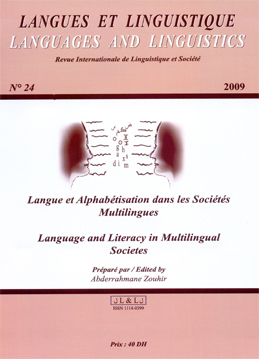Edited by : Abderrahman Zouhir
2009 / Issue 24

Abderrahmane Zouhir
Introduction
Josephine Yambi
A Case Study of Swahili-English Bilingual Child’s Reading
Charles Owu-Ewie
The Language of Education in Ghana and Linguistic Human Rights
Yahya Ibn Ahmed Mehdi Arishi
The Functional Word « Hi :na » in the Holy Qur’an (in Arabic)